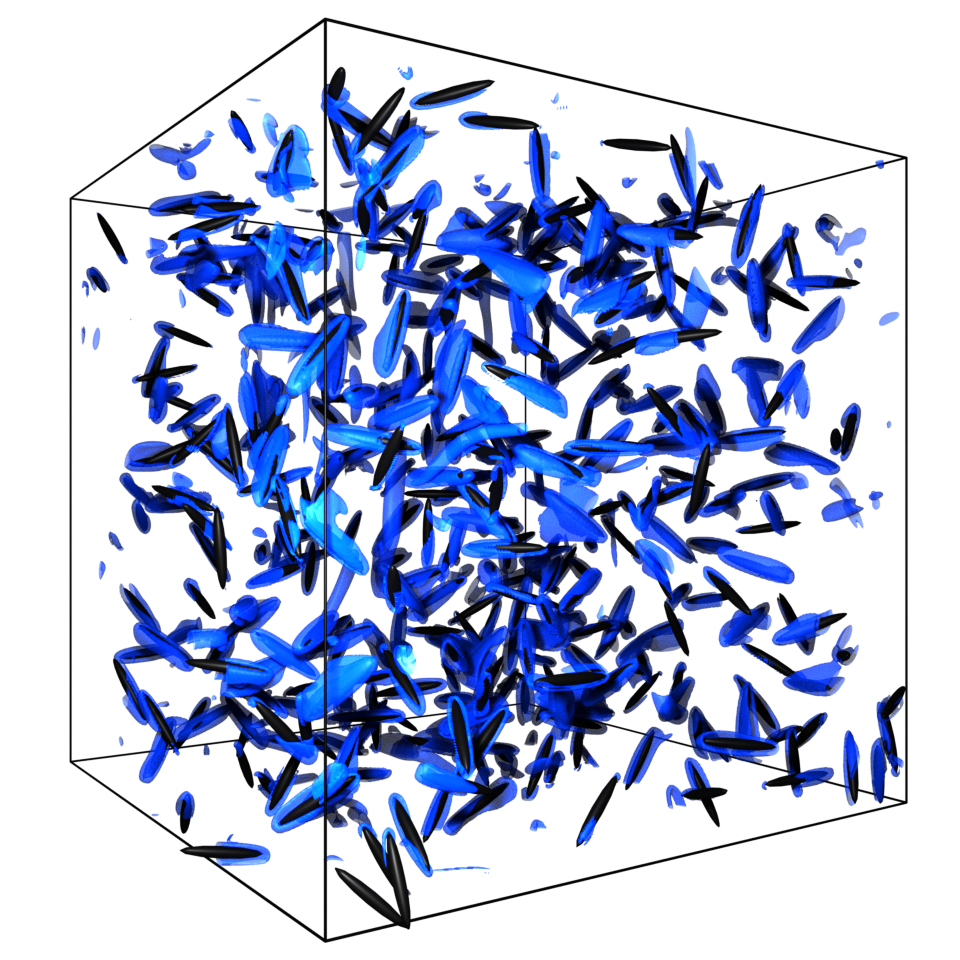Numerical Simulations of Fully Developed Turbulence
JAXA Supercomputer System Annual Report February 2023-January 2024
Report Number: R23EACA05
Subject Category: JSS Inter-University Research
- Responsible Representative: Susumu Goto, Professor, Osaka University
- Contact Information: Susumu Goto(s.goto.es@osaka-u.ac.jp)
- Members: Ryo Araki, Hideto Awai, Susumu Goto, Kenta Hayashi, Wataru Iwashita, Yusuke Koide, Shota Kukimoto, Napat Lilittrakul, Yutaro Motoori, Hideki Murahata, Satoshi Matsumoto, Hayato Masuda, Gendai Nakano, Akito Oda, Masahiro Suzuki, Tomoki Sekigawa, Kodai Saheki, Hiroya Tanioka, Daiki Watanabe, Kiwamu Yoshii
Abstract
Most of flows around us are turbulence, and their prediction and control are important in various research fields. Fortunately, with the improvement of supercomputers, the Reynolds number of turbulence that can be numerically simulated has been getting higher year by year. However, it is still impossible to simulate, without some modeling, extremely-high-Reynolds-number turbulence appeared in aerospace engineering. Therefore, many authors have been developing turbulence model on the basis of the universality of small-scale statistics and dynamics of turbulence. In the present study, we aim at clarifying the origin of the universality of turbulence through numerical simulations of turbulence under various boundary conditions, and construct a new turbulence model with the aid of information science.
Reference URL
N/A
Reasons and benefits of using JAXA Supercomputer System
Many of the flows that appear in aerospace engineering are fully developed turbulence at high Reynolds numbers, and understanding their dynamics and statistics is directly related to various projects in JAXA. In particular, if the construction of a new turbulence model, that is the main research aim of the present project, is successful, it should support the foundation of numerical simulations for many projects.
Achievements of the Year
We continued our research aimed at elucidating the statistics and dynamics of high Reynolds number turbulence under various boundary conditions. In particular, in addition to the accumulated knowledge on single-phase turbulence, we have advanced our understanding of the sustaining mechanism of multiphase turbulent flows. Specifically, numerical simulation studies on the interaction between fluid and solid particles, elastic particles, or droplets, and on turbulence with a gas-liquid interface were conducted. One of the most notable developments from the previous year's results is the study of how turbulence is modulated by the addition of solid particles. On the basis of the picture of the energy cascade in turbulence that we have revealed, we have deepened our understanding of the physical mechanism of turbulence attenuation by spherical or non-spherical particles added to the fluid.

Fig.1: Turbulence under periodic boundary conditions with the addition of spheroidal solid particles. If the velocity relaxation time of the particles is sufficiently long compared to the turnover time of the largest eddies (if the Stokes number is sufficiently large), vortices (blue regions) as large as the minor-axis radius of the spheroids are generated around the particles (black objects), and the additional energy dissipation rate due to these vortices explains the turbulent attenuation.
Publications
- Peer-reviewed papers
1) Yutaro Fujiki, Hideto Awai, Yutano Motoori, Susumu Goto, Attraction of neutrally buoyant deformable particles towards a vortex, Physical Review Fluids 9 (2024) 014301.
2) Jun Fujino, Yutano Motoori, Susumu Goto, Hierarchy of coherent vortices in turbulence behind a cylinder, Journal of Fluid Mechanics 975 (2023) A13.
3) Ryo Araki, Wouter J. T. Bos, Susumu Goto, Minimal modelling of turbulence driven by steady forcing, Fluid Dynamics Research 55 (2023) 035507.
4) Yutaro Motoori, Susumu Goto, Multiscale clustering of heavy and light small particles in turbulent channel flow at high Reynolds numbers, International Journal of Heat and Fluid Flow 102 (2023) 109166.
5) Yusuke Koide, Susumu Goto, Effect of scission on alignment of wormlike micelles under shear flow, Soft Matter 19 (2023) 4323-4332.
Usage of JSS
Computational Information
- Process Parallelization Methods: MPI
- Thread Parallelization Methods: OpenMP
- Number of Processes: 64 - 128
- Elapsed Time per Case: 30 Hour(s)
JSS3 Resources Used
Fraction of Usage in Total Resources*1(%): 0.20
Details
Please refer to System Configuration of JSS3 for the system configuration and major specifications of JSS3.
| System Name | CPU Resources Used(Core x Hours) | Fraction of Usage*2(%) |
|---|---|---|
| TOKI-SORA | 5373191.67 | 0.24 |
| TOKI-ST | 53483.02 | 0.06 |
| TOKI-GP | 0.00 | 0.00 |
| TOKI-XM | 0.00 | 0.00 |
| TOKI-LM | 0.00 | 0.00 |
| TOKI-TST | 0.00 | 0.00 |
| TOKI-TGP | 0.00 | 0.00 |
| TOKI-TLM | 0.00 | 0.00 |
| File System Name | Storage Assigned(GiB) | Fraction of Usage*2(%) |
|---|---|---|
| /home | 5664.00 | 4.70 |
| /data and /data2 | 444240.00 | 2.74 |
| /ssd | 42670.00 | 4.03 |
| Archiver Name | Storage Used(TiB) | Fraction of Usage*2(%) |
|---|---|---|
| J-SPACE | 0.00 | 0.00 |
*1: Fraction of Usage in Total Resources: Weighted average of three resource types (Computing, File System, and Archiver).
*2: Fraction of Usage:Percentage of usage relative to each resource used in one year.
ISV Software Licenses Used
| ISV Software Licenses Used(Hours) | Fraction of Usage*2(%) | |
|---|---|---|
| ISV Software Licenses(Total) | 0.00 | 0.00 |
*2: Fraction of Usage:Percentage of usage relative to each resource used in one year.
JAXA Supercomputer System Annual Report February 2023-January 2024


